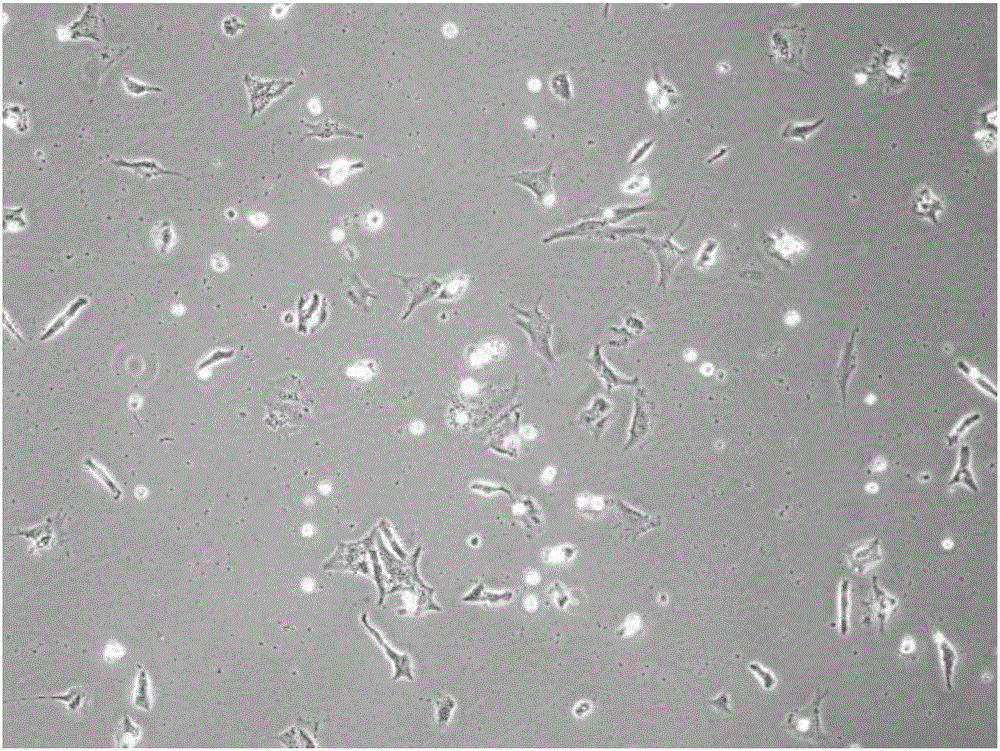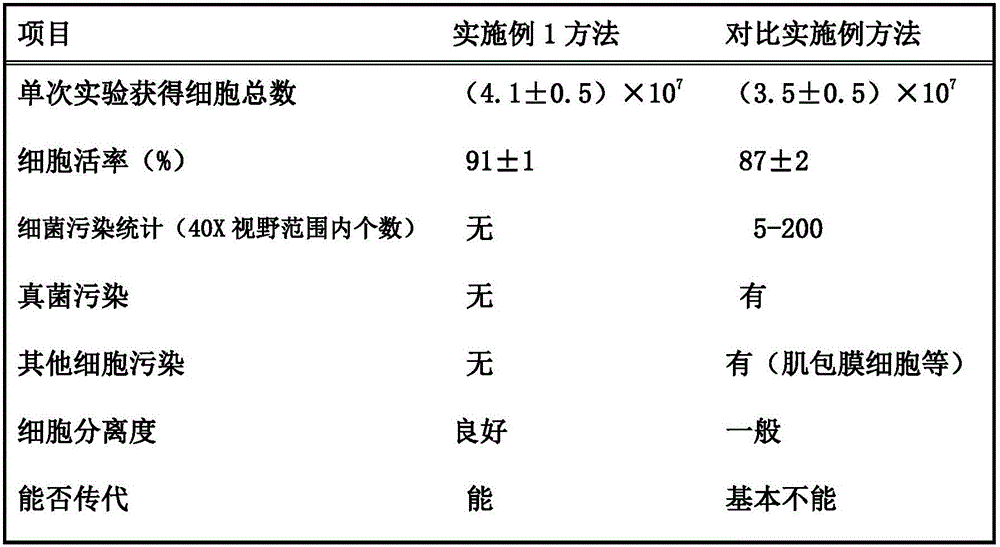Isolation and culture method for primary mice or rat cardiac muscle cells
A technology for the separation and cultivation of cardiomyocytes, applied in the field of cell culture, can solve the problems of increased bacterial, cell, and fungal contamination, difficulty in cardiac perfusion operations, insufficient clear blood contamination, etc., to achieve great promotional significance, avoid contamination, and evenly digest thorough effect
- Summary
- Abstract
- Description
- Claims
- Application Information
AI Technical Summary
Problems solved by technology
Method used
Image
Examples
Embodiment 1
[0039] In this embodiment, SD rats are adopted, and the separation and culture method of the present invention is used to separate cardiomyocytes, and the specific steps are as follows:
[0040] 1. Rat Heart Harvesting
[0041] Firstly, newborn rats were sacrificed (cervical dislocation), soaked in alcohol for 5 minutes, and under a dissecting microscope, the chest cavity was opened to fully expose the heart. Use tweezers to clamp the root of the heart, the blood vessels near the atrium, and cut out the complete heart. Try not to clamp the tissue of the ventricle, because the cardiomyocytes are very sensitive to the clamp, which will easily lead to the death of the cardiomyocytes at the clamped site. The pericardium and other accompanying connective tissue were cleaned and irrigated with D-hanks solution containing double antibody and amphotericin B.
[0042] 2. Take cardiomyocytes
[0043] Under a dissecting microscope, a small biopsy needle is inserted into the wall of the...
PUM
 Login to View More
Login to View More Abstract
Description
Claims
Application Information
 Login to View More
Login to View More - R&D
- Intellectual Property
- Life Sciences
- Materials
- Tech Scout
- Unparalleled Data Quality
- Higher Quality Content
- 60% Fewer Hallucinations
Browse by: Latest US Patents, China's latest patents, Technical Efficacy Thesaurus, Application Domain, Technology Topic, Popular Technical Reports.
© 2025 PatSnap. All rights reserved.Legal|Privacy policy|Modern Slavery Act Transparency Statement|Sitemap|About US| Contact US: help@patsnap.com


